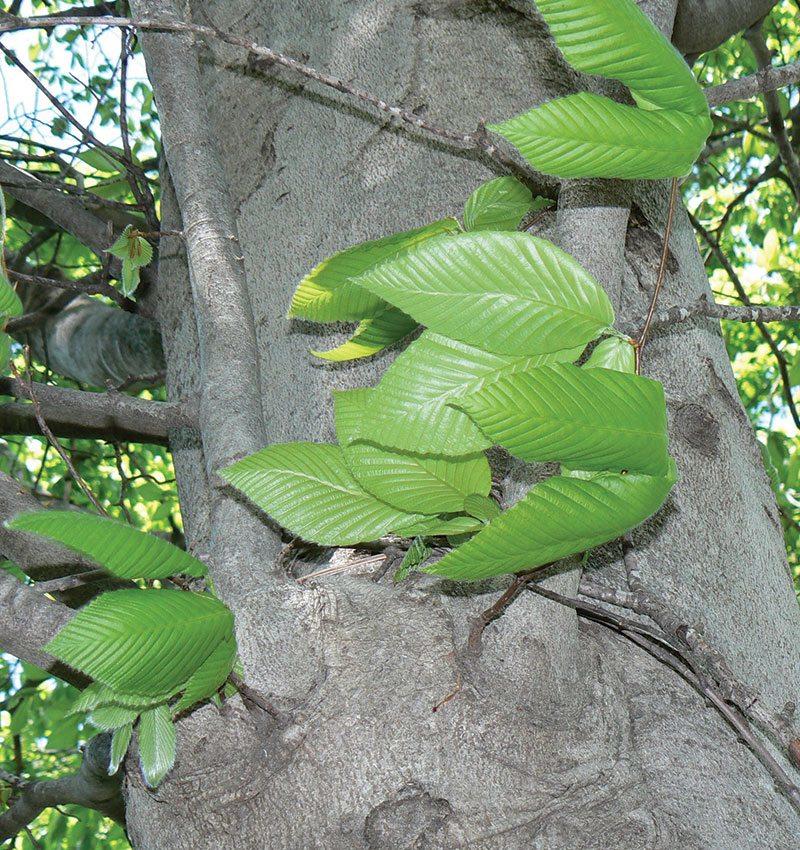Common Name: American beech
Scientific Name:
Family: Fagaceae
Genus: Fagus
Species: F. grandifolia
Hardiness Zone: 3 to 9
Height: 50 to 80 ft
Width: 40 to 80 ft
Common Characteristics:
American beech is a large, deciduous tree that may reach heights of up to 120 feet in the wild. This maximum height is far less likely in an urban setting, where 50 to 80 feet is typical. It is also a long-lived tree, living anywhere between 200 to 300 years. A distinguishing characteristic of the species is the retention of smooth bark in old age. The smooth, straight silvery gray bole is easily recognizable in contrast with the often rough bark of neighboring species. Ovate to elliptical leaves will turn golden bronze in the fall. Yellowish-green flowers appear in the spring but are not particularly showy. The dense foliage and low branching structure of American beech make it a visually appealing shade tree. It also regenerates with sucker shoots, allowing it to grow in dense thickets in the forest. It was recognized by European colonists as being similar to the well-known European beech, giving it its name. Its inability to transplant and grow well in urban environments hinders it from being used more commercially.
Where It Grows:
American beech can be found growing in ravines and valleys. It prefers moist, well-drained acidic soils. It does not tolerate salt or drought well, limiting it from being used commercially as an urban landscape tree. It is also unlikely to be found in tree nurseries which is another limiting factor of its urban usage.
How it is Used:
There are currently no commercial or urban landscape uses for American beech.
Ecosystem Services:
Similar to European beech, American beech produces edible beechnuts that are consumed heavily by a variety of wildlife species. Squirrels, raccoons, and black bears are some of the most common species to be found in areas that are populated with American beech. It also provides a habitat for small mammals, cavity-nesting birds, songbirds, and small game.
Where It is Native To:
American beech's native range is throughout eastern North America. It goes as far north as Illinois and down south to Florida. It can also be found in some areas of Texas, Louisiana, and Arkansas.
Problems:
Beech scale can occasionally be an issue, but other insects or pathogens are not known.
References:
Lady Bird Johnson Wildflower Center.
Little, E. L. (n.d.). National Audubon Society Field Guide to North American Trees; Eastern Edition. (Original work published 1980)
